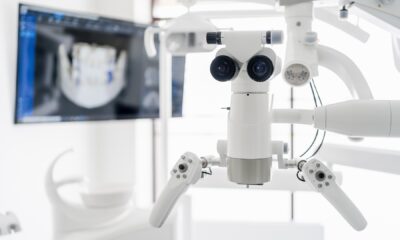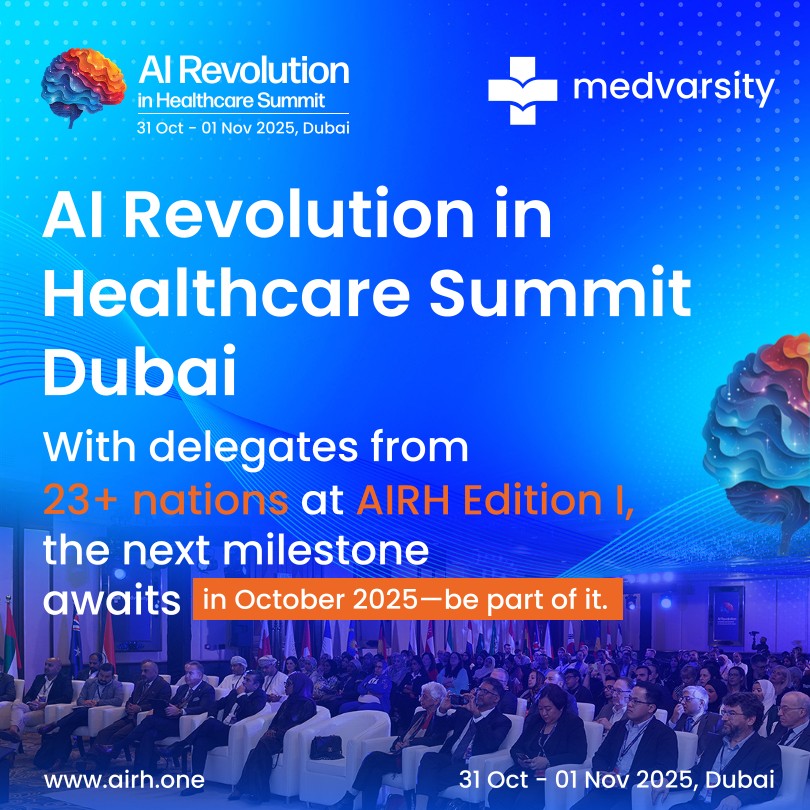Artificial Intelligence
AI in Healthcare: Security Risks and the Need for Robust Cybersecurity Measures

The integration of Artificial Intelligence (AI) in healthcare has revolutionized patient care, diagnostics, and administrative operations. However, as AI-driven systems become more prevalent, they also introduce significant cybersecurity risks. Protecting sensitive healthcare data from cyber threats requires robust security frameworks to ensure compliance, safeguard patient privacy, and maintain trust in AI-powered solutions.
The Security Risks of AI in Healthcare
1. Data Breaches and Unauthorized Access
- AI-driven healthcare systems store vast amounts of sensitive patient data, making them prime targets for hackers.
- Cybercriminals can exploit vulnerabilities in electronic health records (EHRs), leading to identity theft and financial fraud.
- Unauthorized AI model access may expose confidential treatment protocols and predictive analytics.
2. Adversarial Attacks on AI Algorithms
- Malicious actors can manipulate AI training datasets, causing incorrect diagnoses and misleading treatment recommendations.
- Adversarial attacks can deceive machine learning models by feeding them altered medical images or data.
3. Ransomware and AI-Driven Phishing Attacks
- Cybercriminals use ransomware to encrypt healthcare databases, demanding payment for decryption keys.
- AI-powered phishing schemes impersonate healthcare providers, deceiving employees into sharing login credentials.
4. Privacy Concerns and Data Misuse
- AI models require extensive datasets for training, increasing the risk of data exposure.
- Poorly secured AI systems may inadvertently share patient data, violating HIPAA, GDPR, and other regulations.
The Need for Robust Cybersecurity Measures
1. Implement Strong AI Security Protocols
- Use end-to-end encryption to protect patient data at rest and in transit.
- Deploy multi-factor authentication (MFA) for AI system access to prevent unauthorized logins.
- Conduct regular penetration testing and vulnerability assessments to detect potential weaknesses.
2. AI-Driven Threat Detection and Prevention
- Leverage AI-powered cybersecurity tools that detect anomalies and prevent unauthorized access in real time.
- Utilize machine learning-based intrusion detection systems (IDS) to monitor network traffic and flag suspicious activities.
3. Ensuring Compliance with Healthcare Regulations
- Ensure AI applications comply with HIPAA, GDPR, and other global healthcare regulations.
- Maintain transparent AI decision-making and audit logs for regulatory compliance and patient trust.
4. Secure AI Training and Data Management
- Anonymize patient data before using it for AI model training to minimize privacy risks.
- Implement blockchain technology for secure, tamper-proof medical data storage.
5. Educating Healthcare Professionals on AI Security
- Train hospital staff on phishing detection, password hygiene, and secure AI usage.
- Develop cybersecurity awareness programs to prevent human errors leading to security breaches.
The Future of AI Cybersecurity in Healthcare
As AI continues to shape healthcare, organizations must adopt proactive cybersecurity strategies. Future developments include:
- Quantum encryption for ultra-secure patient data protection.
- Decentralized AI models that reduce reliance on centralized, breach-prone databases.
- Federated learning for AI training without exposing raw patient data.
Conclusion
AI is transforming healthcare, but its security risks must be addressed through advanced cybersecurity measures. By implementing strong encryption, AI-driven threat detection, and regulatory compliance frameworks, healthcare organizations can safeguard sensitive patient data while leveraging the full potential of AI. Ensuring AI security is not just a technical necessity—it is a fundamental requirement for maintaining trust and ethical responsibility in modern healthcare.
Artificial Intelligence
How AI is Transforming Telemedicine: A Post-Pandemic Revolution

The COVID-19 pandemic accelerated the adoption of telemedicine, revolutionizing the way healthcare is delivered. What was once a convenience has now become a necessity, with millions relying on virtual consultations and remote monitoring. However, the real game-changer in telemedicine is Artificial Intelligence (AI), which is enhancing efficiency, improving diagnoses, and personalizing patient care like never before.
As we navigate the post-pandemic era, AI-driven telemedicine is shaping the future of healthcare, making it more accessible, cost-effective, and patient-centric. But how exactly is AI transforming telemedicine? Let’s explore the key innovations and challenges in this rapidly evolving field.
1. AI-Powered Virtual Consultations
Virtual doctor visits have become a standard practice, but AI is taking them a step further by enhancing diagnostic capabilities and reducing physician workload.
- AI Chatbots & Virtual Assistants: AI-powered chatbots like Babylon Health and Ada Health assist patients by analyzing symptoms, offering preliminary diagnoses, and guiding them to the appropriate healthcare professional.
- Automated Medical History Collection: AI can gather patient history, summarize symptoms, and provide doctors with essential insights before a consultation, saving time and improving efficiency.
- Language Processing for Better Communication: AI-driven speech recognition ensures seamless transcription of doctor-patient conversations, reducing the burden of manual documentation.
2. Remote Patient Monitoring (RPM) with AI
With the rise of wearable health devices, AI is playing a crucial role in real-time health monitoring. Devices like smartwatches and biosensors collect continuous data on heart rate, blood pressure, oxygen levels, and glucose levels, enabling proactive healthcare interventions.
- Predictive Analytics for Chronic Disease Management: AI analyzes patient data to predict potential health risks, allowing doctors to intervene before conditions worsen.
- AI-Powered ECG and Blood Pressure Monitoring: Devices like the Apple Watch and Fitbit now incorporate AI-driven algorithms to detect irregular heartbeats, alerting users to possible atrial fibrillation or hypertension.
- Smart AI Alerts: AI flags abnormalities and sends automated alerts to physicians, caregivers, or emergency responders, enhancing patient safety.
3. AI-Based Diagnostics in Telemedicine
One of the biggest challenges in virtual healthcare is accurate remote diagnosis. AI is bridging this gap with advanced image recognition, deep learning models, and intelligent symptom analysis.
- AI-Driven Radiology & Imaging: AI can analyze medical scans (X-rays, MRIs, and CT scans) remotely, assisting radiologists in identifying diseases like pneumonia, cancer, and fractures faster and more accurately.
- Computer Vision for Dermatology & Ophthalmology: Telemedicine platforms now use AI to analyze skin conditions and eye diseases through smartphone images, reducing the need for in-person visits.
- AI for Early Disease Detection: Machine learning models trained on vast datasets can detect early signs of conditions like diabetes, Alzheimer’s, and respiratory illnesses, allowing for timely intervention.
4. AI and Personalized Treatment Plans
Every patient is unique, and AI is making personalized medicine a reality. By analyzing individual health records, genetics, and lifestyle factors, AI can tailor treatment recommendations specifically for each patient.
- AI-Driven Medication Management: AI suggests optimal drug dosages and treatment plans based on patient history and genetic data, reducing adverse drug reactions.
- Behavioral Health & AI in Mental Health Teletherapy: AI chatbots like Woebot and Wysa provide mental health support, offering cognitive behavioral therapy (CBT) exercises, emotional tracking, and crisis intervention.
- AI-Enhanced Nutrition and Wellness Coaching: AI-powered apps analyze diet, exercise, and sleep patterns, offering personalized health recommendations to improve overall well-being.
5. Reducing Healthcare Disparities with AI Telemedicine
AI-driven telemedicine is bridging the gap in healthcare access, especially in rural and underserved areas.
- Language Translation & Accessibility Features: AI-powered translation tools enable cross-language communication, allowing doctors to consult with patients who speak different languages.
- AI-Powered Diagnostics for Low-Resource Areas: In regions with limited healthcare facilities, AI-based mobile health apps help detect diseases early, ensuring prompt treatment.
- Affordable AI-Driven Healthcare: Virtual AI consultations reduce the cost of healthcare, making medical advice more accessible to individuals without insurance or financial means.
6. Challenges and Ethical Concerns in AI Telemedicine
While AI is revolutionizing telemedicine, there are several challenges that need to be addressed:
- Data Privacy & Security Risks: AI-driven telemedicine relies on massive amounts of sensitive patient data. Ensuring secure storage, encryption, and compliance with HIPAA and GDPR regulations is crucial.
- Bias in AI Algorithms: AI models must be trained on diverse datasets to avoid racial, gender, and socioeconomic biases that can lead to misdiagnoses and health disparities.
- Lack of Human Touch: While AI enhances efficiency, some patients may feel uncomfortable relying on automated chatbots or virtual assistants instead of human doctors. Balancing AI automation with human empathy is essential.
- Regulatory Approvals and Legal Liability: Who is responsible if an AI-driven diagnosis leads to medical errors? Governments and healthcare organizations must establish clear legal guidelines for AI accountability.
The Future of AI in Telemedicine
The post-pandemic era has proven that AI-driven telemedicine is here to stay. As technology advances, we can expect:
- Fully AI-Assisted Remote Surgeries using 5G, robotics, and augmented reality.
- Advanced AI Health Predictors that forecast potential diseases years in advance based on genetic and lifestyle data.
- AI-Integrated Smart Homes that continuously monitor patient health through IoT-connected devices, ensuring early intervention.
AI is not replacing doctors—instead, it is enhancing their capabilities, allowing healthcare providers to deliver faster, more accurate, and more personalized care. The future of telemedicine lies in a seamless collaboration between AI technology and human expertise, ensuring that every patient receives accessible, affordable, and high-quality healthcare—anytime, anywhere.
Conclusion
AI is transforming telemedicine from a pandemic-driven necessity into a long-term healthcare revolution. With the power of machine learning, predictive analytics, and real-time diagnostics, AI is making virtual healthcare smarter, more efficient, and more inclusive. While challenges remain, the potential of AI-powered telemedicine is limitless—reshaping healthcare as we know it.
The question is no longer whether AI will change telemedicine—but how quickly we can adapt to this new era of intelligent, tech-driven healthcare.
Artificial Intelligence
AI-Driven Medical Imaging: Enhancing Early Detection of Diseases

Artificial Intelligence (AI) is revolutionizing the field of medical imaging, bringing unprecedented accuracy and efficiency to disease detection. From cancer screenings to neurological disorders, AI-driven medical imaging is improving early diagnosis, reducing human error, and accelerating treatment planning. This article explores the impact of AI in medical imaging and how it is shaping the future of healthcare.
The Role of AI in Medical Imaging
Medical imaging, including X-rays, MRIs, CT scans, and ultrasounds, plays a crucial role in diagnosing various diseases. Traditionally, radiologists interpret these images to identify abnormalities, but human analysis has limitations, including fatigue and subjective interpretation. AI, particularly deep learning and machine learning algorithms, can analyze vast amounts of imaging data with remarkable precision, identifying patterns that may be imperceptible to the human eye.
Enhancing Early Disease Detection
One of the most significant benefits of AI in medical imaging is its ability to detect diseases at an early stage. Early detection can drastically improve treatment outcomes and survival rates. Here are some key areas where AI is making a difference:
1. Cancer Detection
AI-powered imaging tools are revolutionizing cancer diagnosis. For example, deep learning models can analyze mammograms to detect breast cancer with higher accuracy than traditional methods. Similarly, AI can identify lung nodules in CT scans, leading to early lung cancer detection and better patient prognosis.
2. Neurological Disorders
AI-driven imaging techniques are advancing the diagnosis of neurological disorders such as Alzheimer’s disease, Parkinson’s disease, and multiple sclerosis. AI algorithms can detect minute changes in brain scans that signal early-stage neurological conditions, allowing for timely intervention.
3. Cardiovascular Diseases
AI helps in diagnosing heart conditions by analyzing echocardiograms, angiograms, and cardiac MRIs. AI can predict heart disease risks by assessing plaque buildup in arteries and detecting irregular heartbeats, which can help prevent life-threatening events such as heart attacks.
4. Pulmonary Diseases
AI-driven imaging is playing a critical role in detecting lung diseases, including pneumonia, tuberculosis, and COVID-19. AI models can analyze chest X-rays and CT scans to quickly identify respiratory infections and assess their severity, enabling faster treatment decisions.
AI-Powered Workflow Automation
Beyond detection, AI is transforming the workflow in radiology departments. AI-powered automation assists radiologists by:
- Prioritizing critical cases – AI can flag high-risk cases for immediate attention, ensuring timely diagnosis.
- Reducing workload – AI assists in preliminary diagnoses, allowing radiologists to focus on complex cases.
- Enhancing image quality – AI improves image reconstruction, reducing noise in scans and enhancing clarity.
Challenges and Ethical Considerations
While AI in medical imaging offers significant advantages, it also comes with challenges:
- Data privacy concerns – Medical imaging involves sensitive patient data, requiring robust cybersecurity measures.
- Algorithm bias – AI models must be trained on diverse datasets to avoid biases that could lead to inaccurate diagnoses.
- Regulatory hurdles – AI-powered diagnostic tools must meet strict regulatory approvals before widespread adoption.
The Future of AI in Medical Imaging
AI-driven medical imaging is poised for even greater advancements, integrating with robotics and augmented reality to further enhance diagnostic capabilities. Future developments may include AI-assisted real-time image analysis during surgeries and more sophisticated predictive analytics for disease prevention.
With ongoing research and technological advancements, AI will continue to play a crucial role in early disease detection, improving healthcare outcomes and saving lives. As AI adoption grows, collaboration between medical professionals and AI experts will be essential in harnessing its full potential while ensuring ethical and responsible use.
Conclusion
AI-driven medical imaging is transforming healthcare by improving early disease detection, enhancing diagnostic accuracy, and streamlining radiology workflows. As AI technology evolves, it will continue to push the boundaries of medical innovation, ultimately leading to better patient care and outcomes.
Artificial Intelligence
Human vs. AI Doctors: Can Machines Replace Physicians?

Introduction
Artificial Intelligence (AI) is revolutionizing healthcare, offering advanced diagnostic capabilities, personalized treatment recommendations, and automation of administrative tasks. AI-powered systems can analyze vast amounts of medical data, detect patterns faster than humans, and improve healthcare efficiency. But does this mean AI can replace physicians?
While AI is proving to be a valuable tool in modern medicine, human doctors bring intuition, empathy, ethical judgment, and a holistic understanding of patients that machines cannot replicate. This article explores the capabilities and limitations of AI doctors, comparing them to human physicians and evaluating whether AI will replace, assist, or complement medical professionals in the future.
1. The Rise of AI in Medicine
AI is transforming healthcare by enhancing diagnostics, optimizing treatment plans, and automating repetitive tasks. Advances in machine learning, natural language processing (NLP), and medical imaging allow AI to perform tasks once reserved for doctors.
🔹 Key AI Applications in Healthcare:
✅ AI-Powered Diagnostics: Machine learning models detect cancer, heart disease, and neurological disorders faster than traditional methods.
✅ Robotic Surgery: AI-assisted robotic systems, like da Vinci Surgical System, enhance precision in complex surgeries.
✅ Drug Discovery: AI accelerates drug development, predicting molecular interactions for new treatments.
✅ AI Chatbots & Virtual Assistants: Platforms like IBM Watson, Ada Health, and Babylon Health provide medical advice based on patient symptoms.
✅ Predictive Healthcare Analytics: AI analyzes patient data to predict disease risks and treatment outcomes.
Impact: AI is making healthcare faster, more precise, and cost-effective, but can it function independently of human doctors?
2. Can AI Doctors Outperform Human Physicians?
🔹 AI Strengths: Where Machines Excel
✅ Speed & Accuracy in Diagnosing Diseases
- AI can analyze millions of medical images, genetic profiles, and patient records in seconds.
- Example: Google’s DeepMind AI diagnosed breast cancer with 94% accuracy, outperforming radiologists in early detection.
✅ Data-Driven Decision Making
- AI eliminates human bias and recommends treatment plans based purely on medical data.
- AI models predict which drugs or therapies will be most effective for individual patients.
✅ Continuous Learning & Knowledge Retention
- AI learns from global medical databases, keeping up with the latest research faster than human doctors.
- Example: IBM Watson Health scans thousands of scientific papers daily, helping oncologists design personalized cancer treatments.
✅ Automation of Administrative & Repetitive Tasks
- AI reduces paperwork, appointment scheduling, and insurance claims processing, allowing doctors to focus on patient care.
- AI-powered speech recognition tools transcribe doctor-patient conversations directly into Electronic Health Records (EHRs).
Result: AI doctors excel in data analysis, pattern recognition, and automation, significantly improving medical efficiency.
🔹 Human Strengths: Why Doctors Remain Irreplaceable
✅ Empathy & Patient Communication
- AI lacks human connection and emotional intelligence, essential for comforting patients during distressing diagnoses.
- Example: A cancer patient needs more than statistics—they need compassion, reassurance, and emotional support, which only human doctors can provide.
✅ Ethical & Moral Decision-Making
- AI lacks ethical reasoning in complex medical cases.
- Example: Should a terminally ill patient undergo high-risk surgery, or should they focus on palliative care? AI relies on data, while human doctors consider patient values, cultural factors, and quality of life.
✅ Complex Case Management & Critical Thinking
- Some diseases, like rare genetic disorders or autoimmune conditions, require intuition and clinical judgment beyond AI’s capabilities.
- Example: A patient with multiple chronic illnesses may not fit standard AI algorithms, requiring a doctor’s expertise to tailor treatments.
✅ Surgeon-Patient Trust & Real-Time Decision Making
- AI-assisted robotic surgery enhances precision, but surgeons must make critical adjustments during procedures.
- Example: In high-risk brain surgery, an AI cannot adapt as well as a human neurosurgeon.
Result: AI cannot replace human doctors in ethical, emotional, and critical-thinking aspects of medicine.
3. Human-AI Collaboration: The Future of Healthcare
Rather than AI replacing physicians, the future lies in human-AI collaboration, where AI serves as an assistant, not a replacement.
🔹 The Ideal Healthcare Model: AI + Human Doctors
✅ AI handles data-driven diagnostics, automation, and administrative tasks.
✅ Doctors focus on patient interaction, ethical decision-making, and complex case management.
✅ AI-assisted doctors achieve higher diagnostic accuracy, faster treatment plans, and improved patient outcomes.
🔹 Real-World Examples of AI-Assisted Medicine:
Mayo Clinic & IBM Watson Health: AI assists oncologists in designing personalized cancer treatments.
Johns Hopkins & AI Surgery: AI-powered robotic systems support surgeons in precision-based spinal surgeries.
AI Chatbots in Telemedicine: AI-driven virtual assistants handle routine patient queries, allowing doctors to focus on critical cases.
Impact: AI and human doctors working together create a more efficient, patient-centric healthcare system.
4. Challenges & Ethical Concerns of AI in Medicine
Despite its benefits, AI in healthcare raises serious ethical and regulatory questions:
🔹 1. AI Bias & Fairness Issues
- AI models trained on biased datasets may provide inaccurate diagnoses for certain ethnic groups.
- Solution: AI must be trained on diverse, representative medical data to ensure fairness.
🔹 2. Liability & Accountability
- If an AI misdiagnoses a patient, who is responsible—the AI developer, the hospital, or the doctor?
- Solution: Legal frameworks must define accountability for AI-driven medical errors.
🔹 3. Data Privacy & Cybersecurity Risks
- AI systems handling sensitive patient data are vulnerable to hacking and breaches.
- Solution: Blockchain-based security and HIPAA-compliant AI algorithms must protect patient records.
🔹 4. Resistance from Medical Professionals
- Some doctors fear AI will replace them, leading to job displacement.
- Solution: AI should be integrated as a tool to assist doctors, not replace them.
Outcome: AI in healthcare must be ethical, transparent, and regulated to ensure patient safety.
5. The Verdict: Can AI Replace Doctors?
❌ NO – AI cannot fully replace human doctors.
✅ YES – AI will become an essential tool in modern medicine.
AI excels in data processing, diagnostics, and automation, but it lacks human intuition, ethical reasoning, and patient empathy. The future of medicine is not about AI vs. doctors, but about AI-assisted doctors providing superior patient care.
The Future of Healthcare: AI as a Medical Partner
✅ AI-powered hospitals will enhance efficiency, reduce medical errors, and optimize workflows.
✅ Doctors will focus on patient care, complex decision-making, and ethical considerations.
✅ Human-AI collaboration will lead to faster, more accurate, and personalized healthcare solutions.
Final Thought: AI won’t replace doctors—but doctors who use AI will replace those who don’t.
Conclusion
AI is transforming medicine, but human doctors remain irreplaceable for their empathy, ethical judgment, and critical thinking. The future belongs to AI-augmented physicians, where technology enhances human expertise rather than replacing it.
In the evolving landscape of healthcare, the best doctor isn’t AI or human—it’s AI-assisted human intelligence.
-

 Artificial Intelligence6 months ago
Artificial Intelligence6 months agoHow AI is Revolutionizing Medical Diagnoses: From Radiology to Pathology
-

 Healthtech6 months ago
Healthtech6 months agoThe Future of Smart Pills: How Ingestible Sensors Can Improve Treatment Adherence
-

 Artificial Intelligence6 months ago
Artificial Intelligence6 months agoAI in Cancer Detection: How Machine Learning is Transforming Oncology
-

 Artificial Intelligence6 months ago
Artificial Intelligence6 months agoCan AI Predict the Next Pandemic? AI in Epidemiology and Public Health
-

 Artificial Intelligence6 months ago
Artificial Intelligence6 months agoAI in Medical Robotics: From Surgery Assistance to Patient Care
-

 Artificial Intelligence6 months ago
Artificial Intelligence6 months agoAI-Powered Precision Medicine: Personalized Treatments for Better Outcomes
-

 Artificial Intelligence6 months ago
Artificial Intelligence6 months agoAI in Mental Health: Can Chatbots and Machine Learning Diagnose Depression?
-

 Healthtech6 months ago
Healthtech6 months agoThe Ethics of AI and Data Privacy in Healthcare Technology












